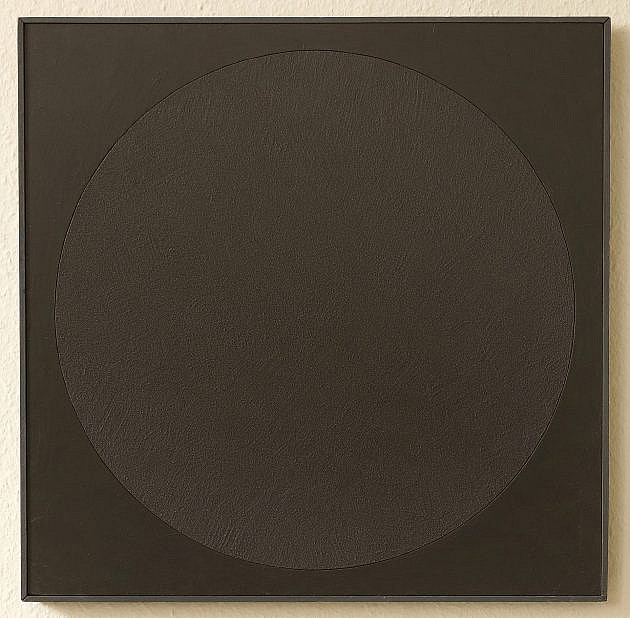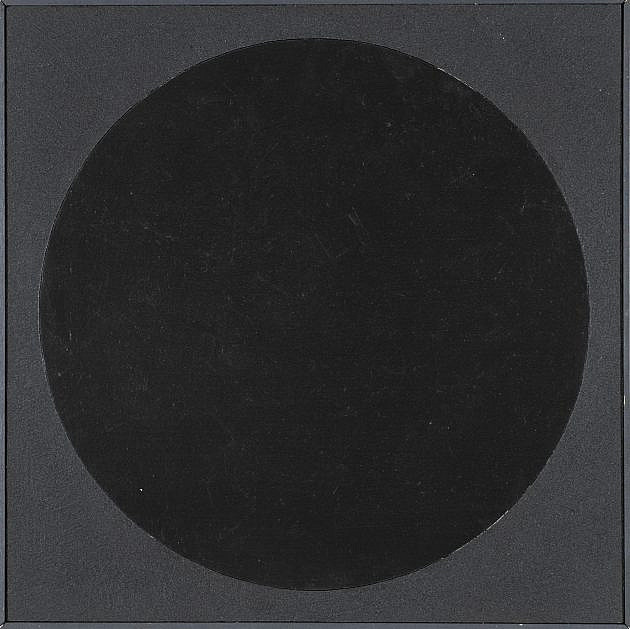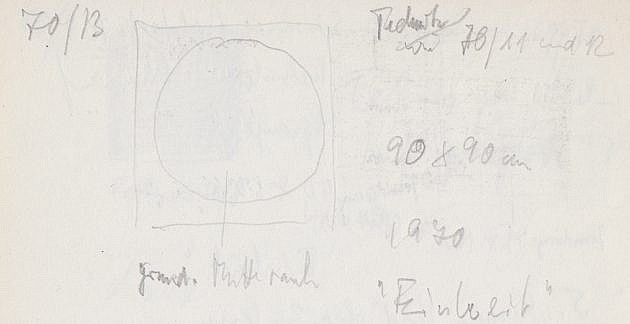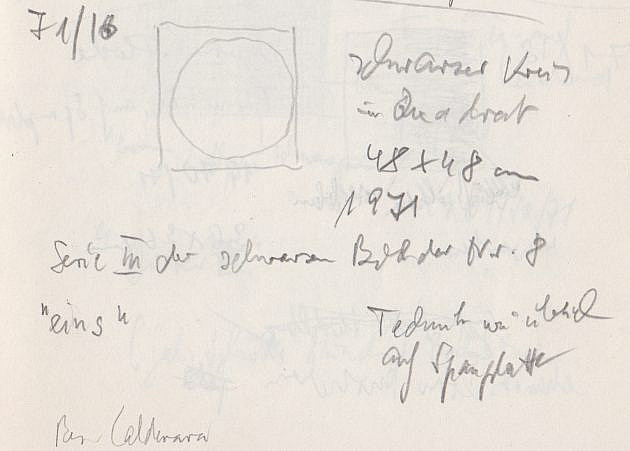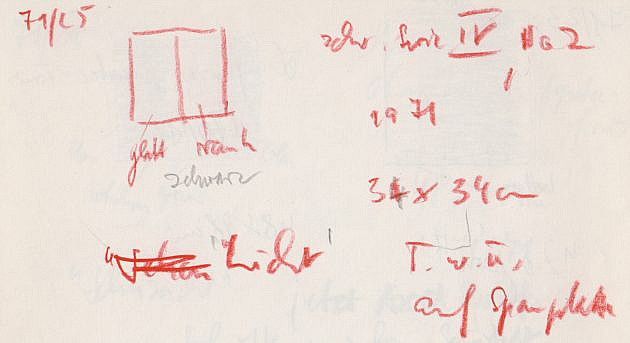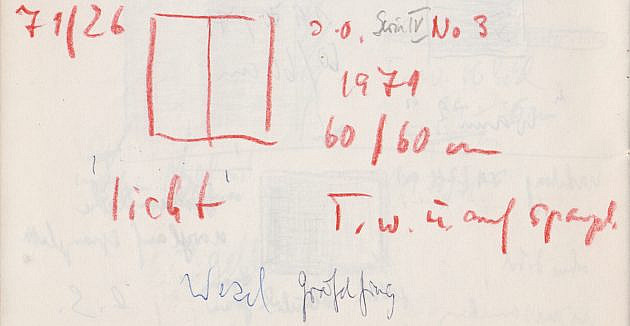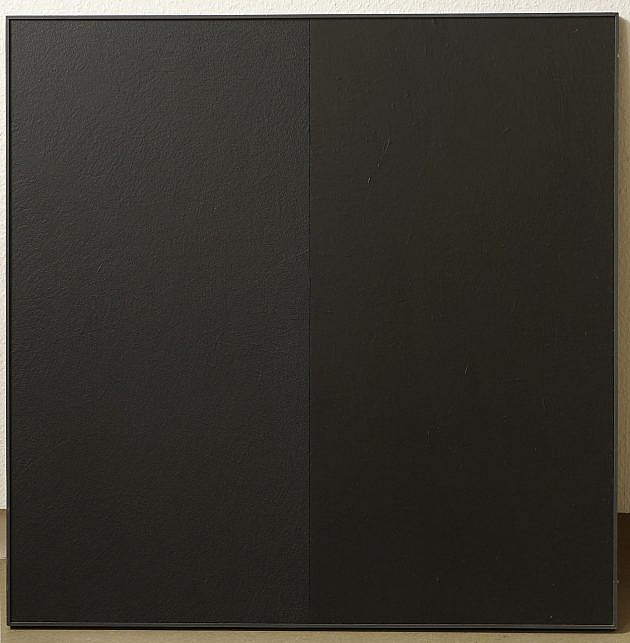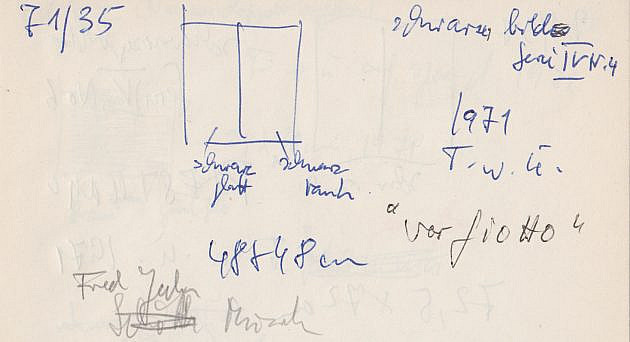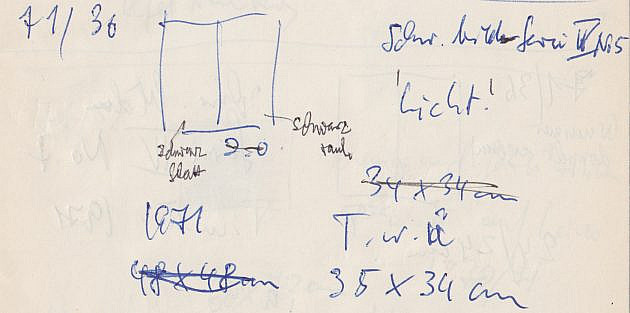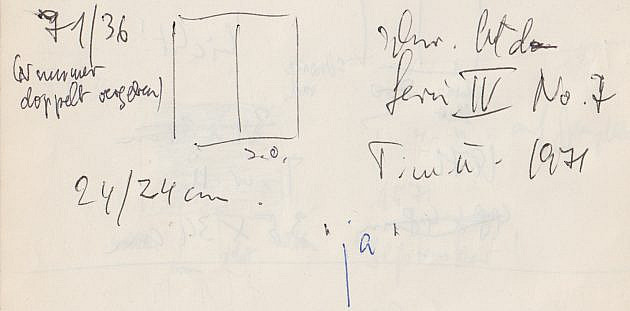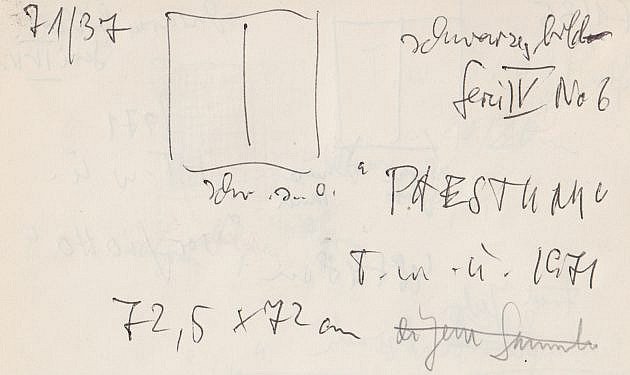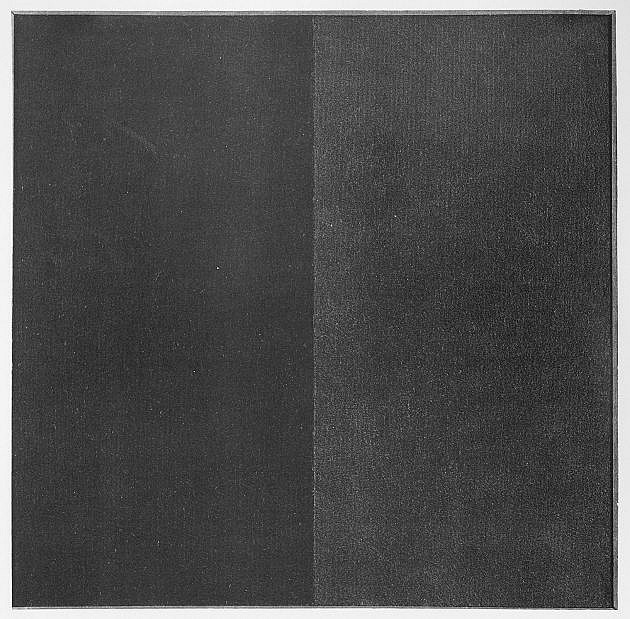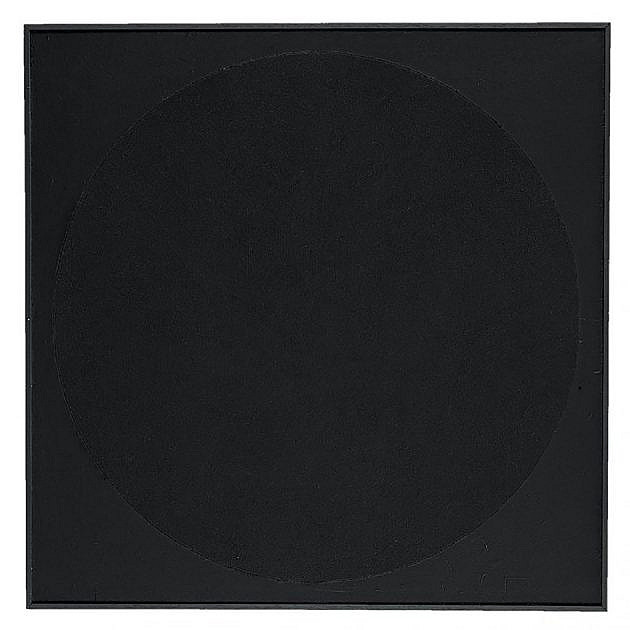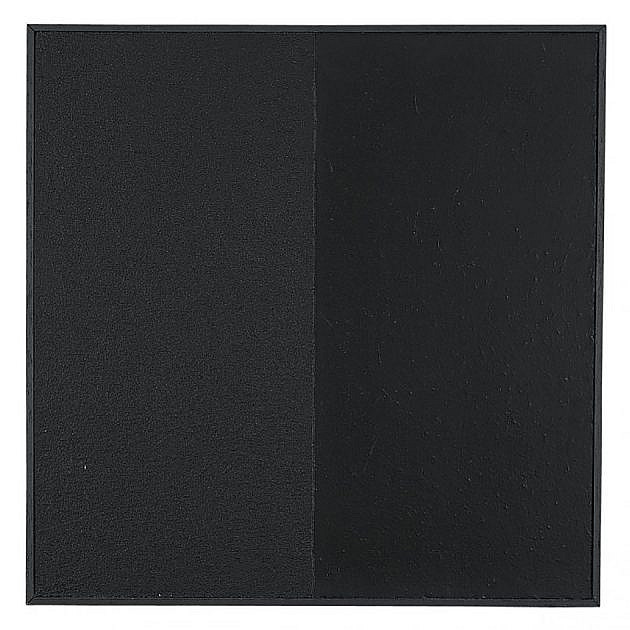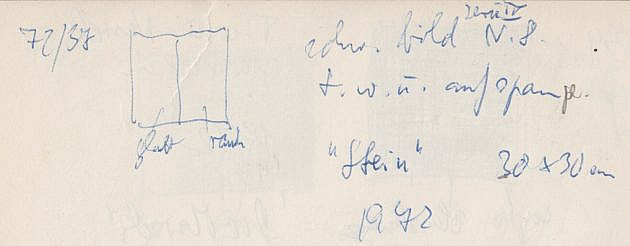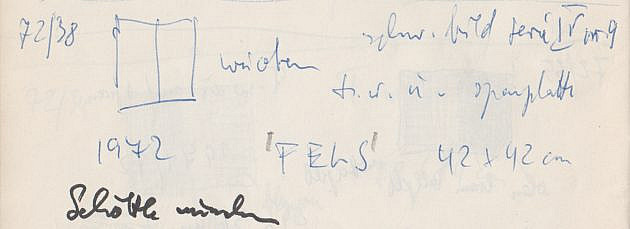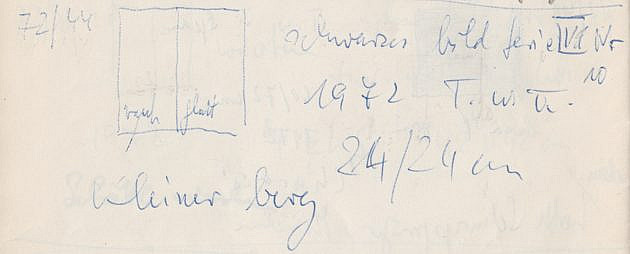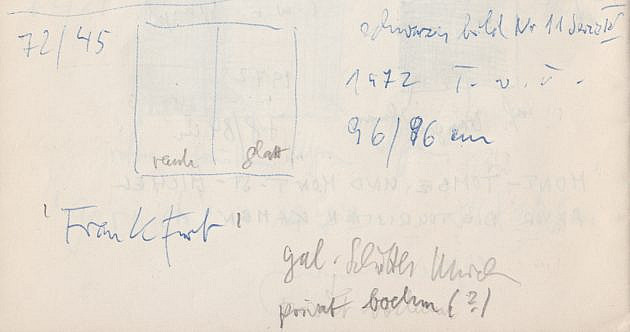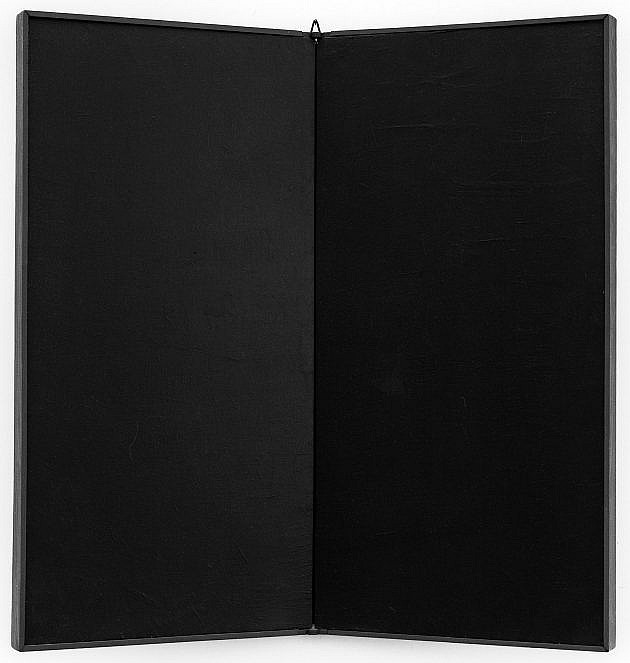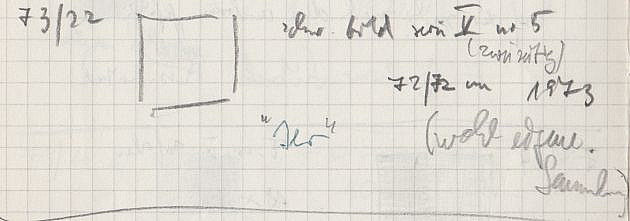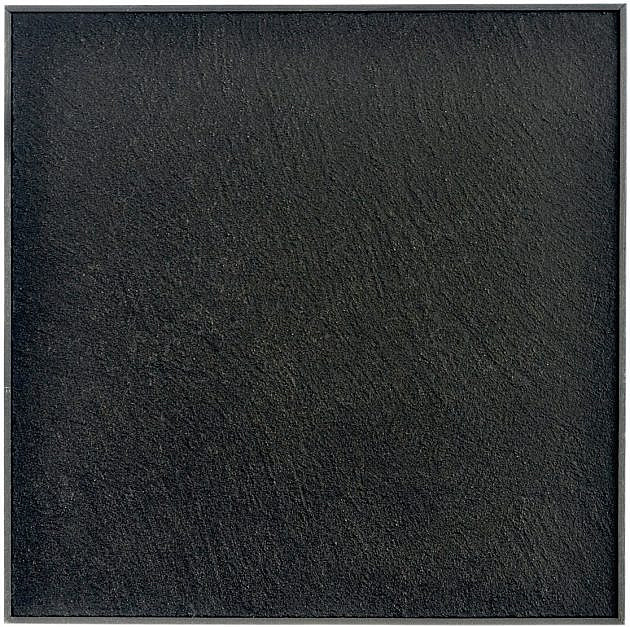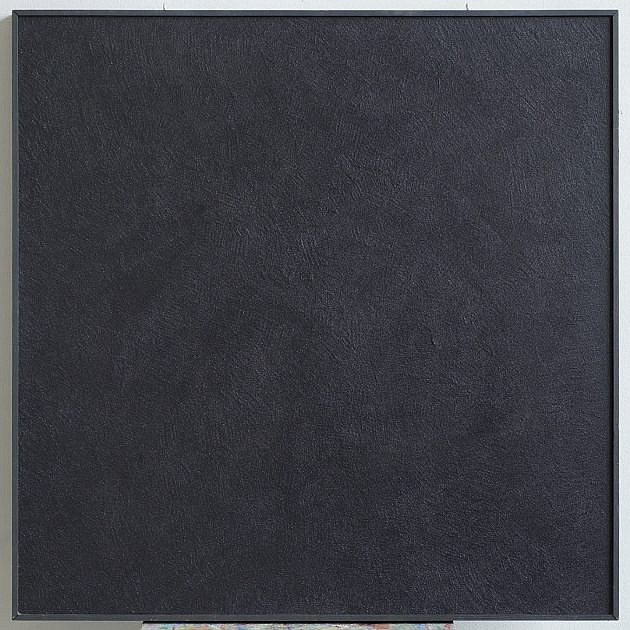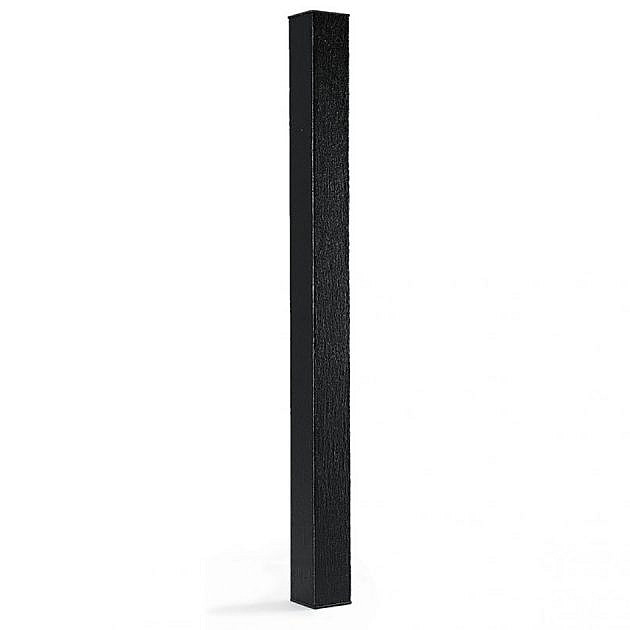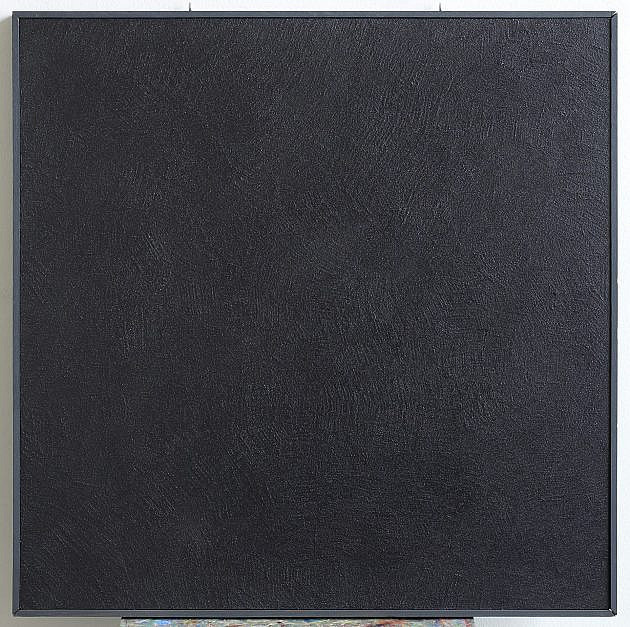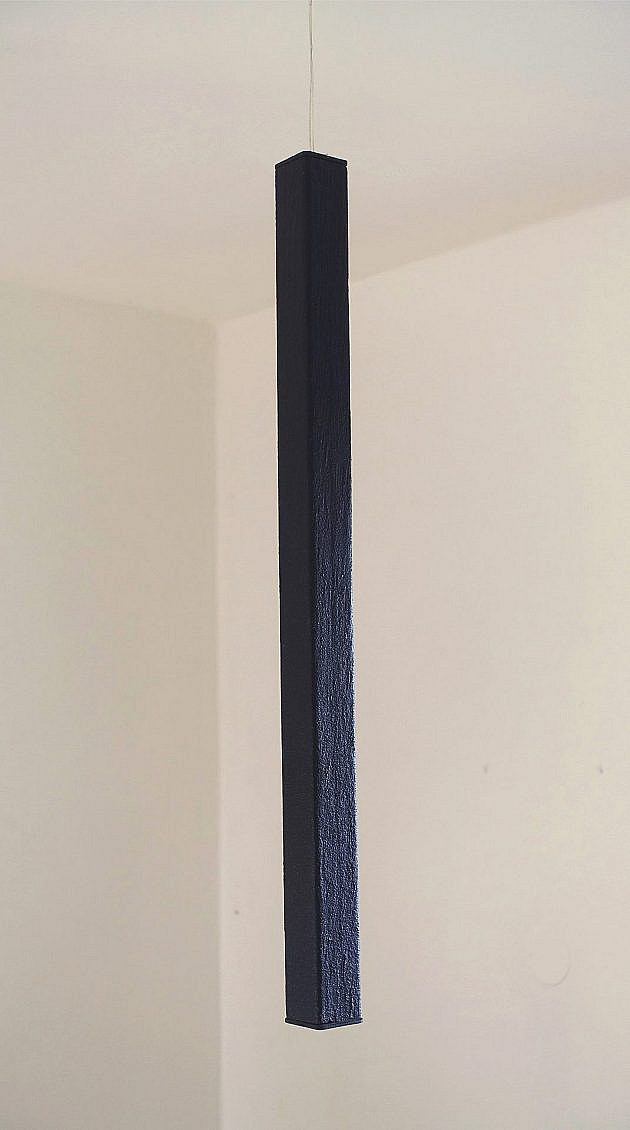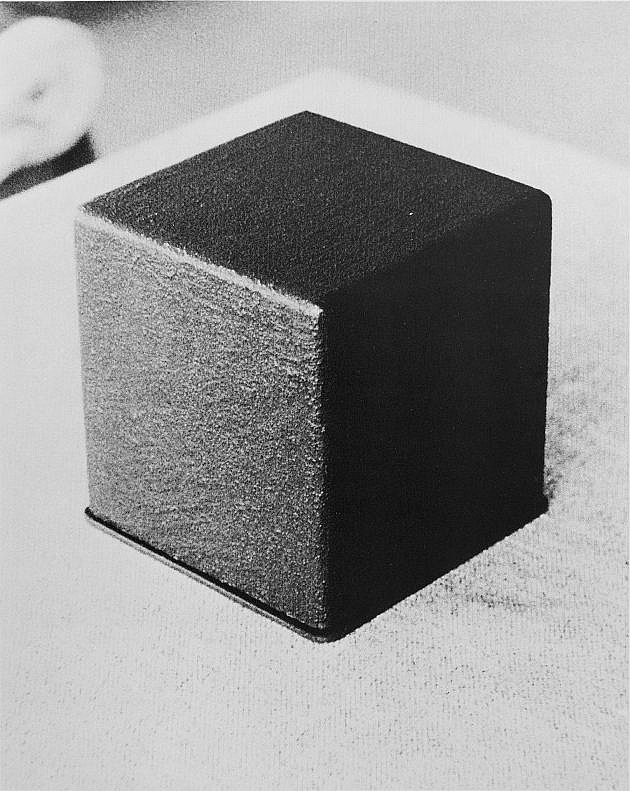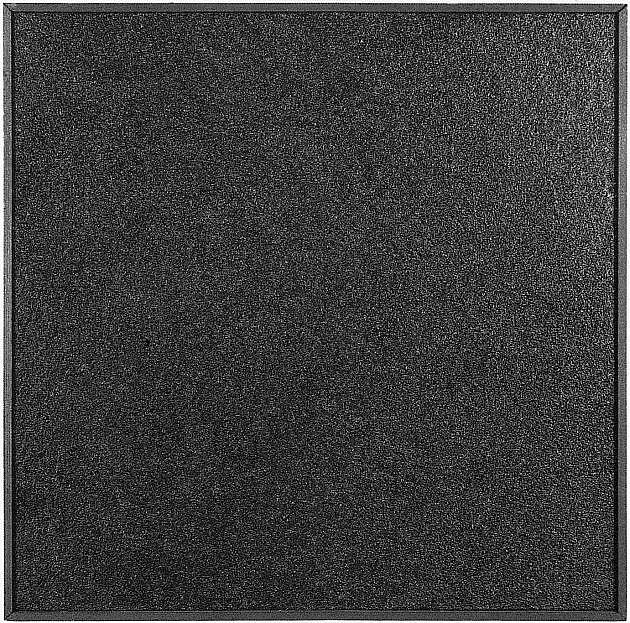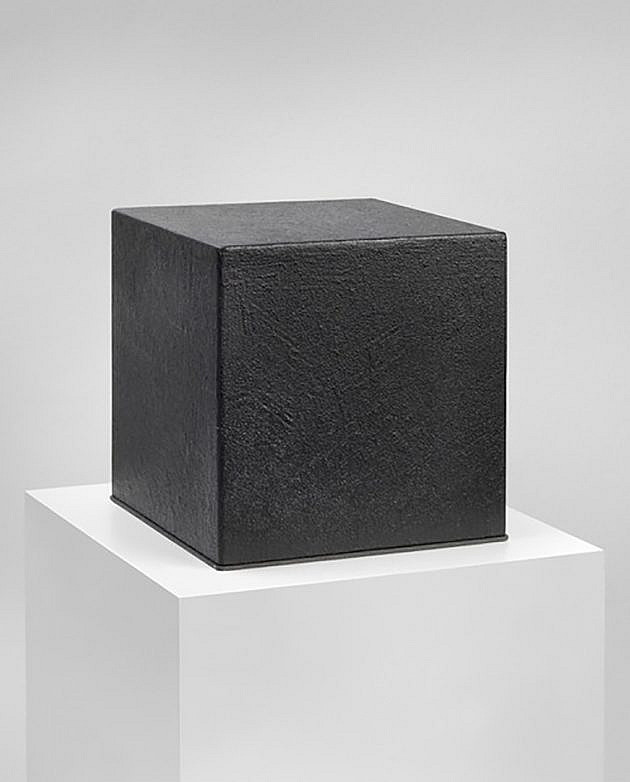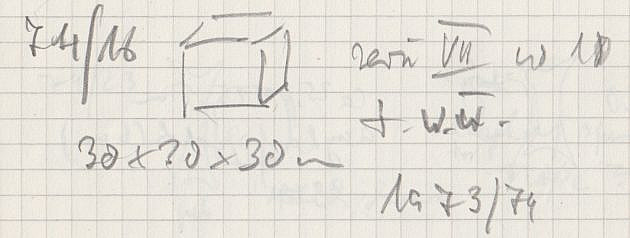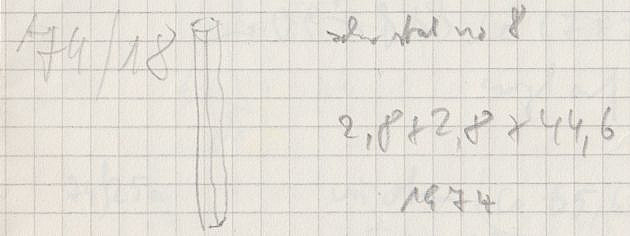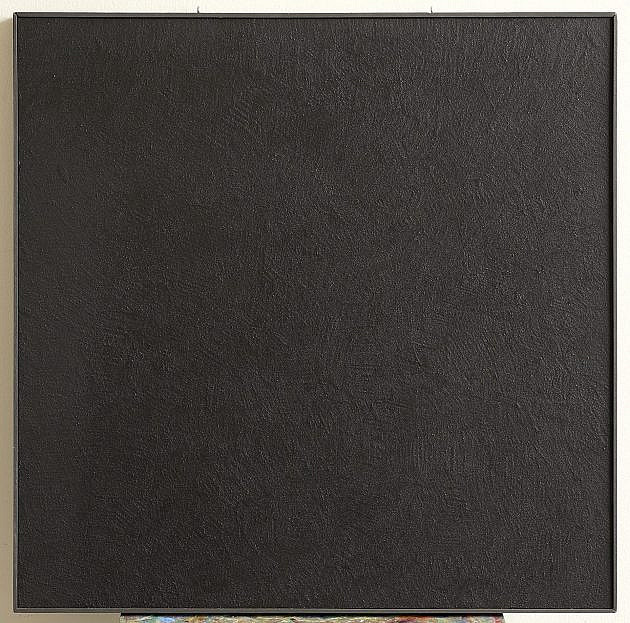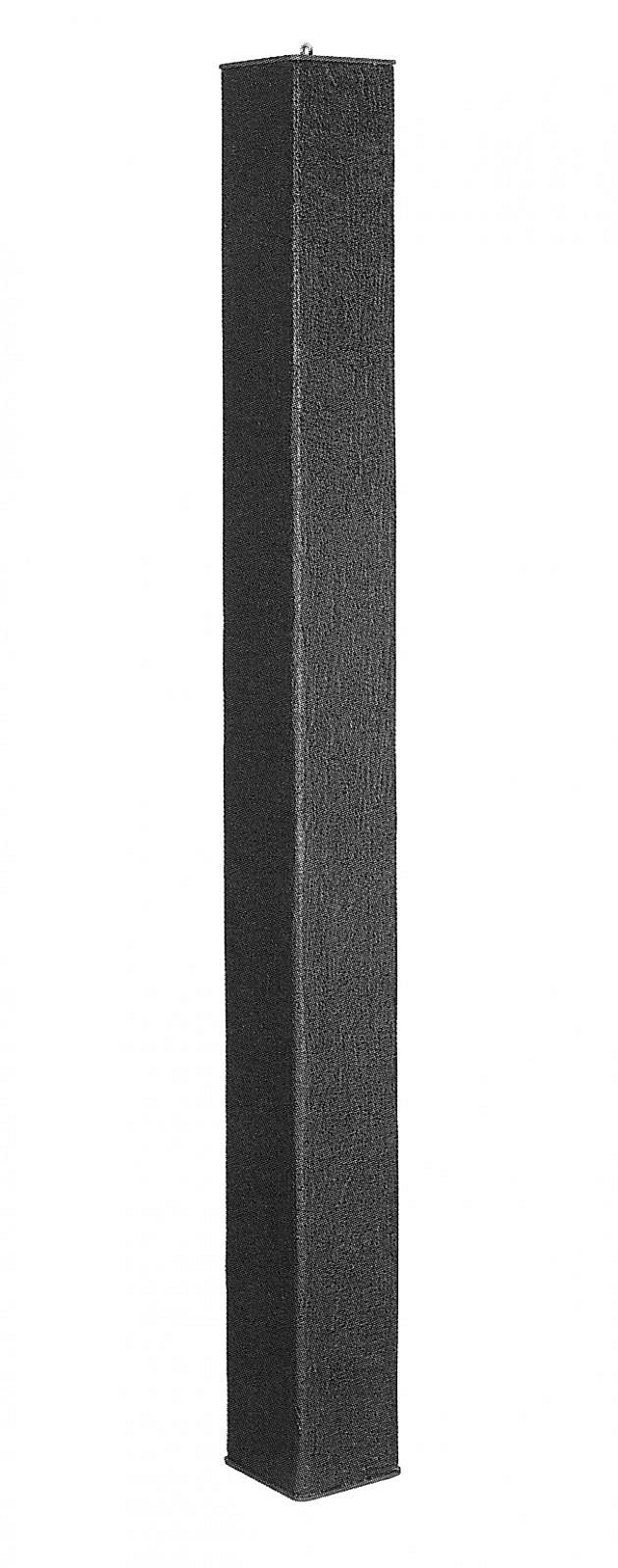Schwarze Serie / Black series
„Sofern die Malerei des Deckels verdichtet, was unter ihm verborgen liegt, verwirklicht sich in ihr eine Art substraktiven Verfahrens. Dieser Vorgehensweise ist der Künstler auch in den späteren schwarzen Bildern in einer neuen Wendung gefolgt. Sofern aber die Malerei einer Fläche zugehört, die sich öffnen lässt und Einblick auf etwas anderes, Inneres gewährt, das gleichwohl in seinen Bestandteilen der Realität entstammt, spielt diese Konzeption auf die alte Vorstellung des verhüllten oder heiligen Bildes an. Aber auch aus anderen als sakralen Zusammenhängen wissen wir“, schreibt Gottfried Boehm über Jochims’ Schwarze Bilder, „dass Bilder nicht nur ästhetische stilisieren oder abbilden, sondern eine Macht zu repräsentieren vermögen, die des Schleiers bedarf.“
Grundlage dieser Konzeption ist die Einsicht, dass sich im Medium der Malerei nicht Weiß, sondern Schwarz als Vereinigngunspunkt der Buntfarben erweist.
Der Rückgang auf die Identitätsbeziehung von Farbe und Fläche – einer Farbe, die sich frei von gestischen Ausdrucksspuren kontinuierlich über die Bildebene ausbreitet, bedeutet auch eine Aufhebung von Form.
Gottfried Boehm, Kunsthistoriker, Basel
Insofar as the painting of the lid condenses what lies hidden beneath it, it realizes a kind of subtractive process. The artist also followed this approach in a new twist in the later black paintings. However, insofar as the painting belongs to a surface that can be opened up and allows an insight into something else, something inside, which nevertheless originates from reality in its components, this concept alludes to the old idea of the veiled or sacred image. But we also know from contexts other than the sacred,” writes Gottfried Boehm about Jochims‘ Black Paintings, ‘that images not only stylize or depict aesthetics, but are also capable of representing a power that requires a veil.’
The reduction to the identity relationship between color and surface – a color that spreads continuously across the picture plane free of gestural traces of expression – also means a suspension of form.
Gottfried Boehm, art historian, Basel
